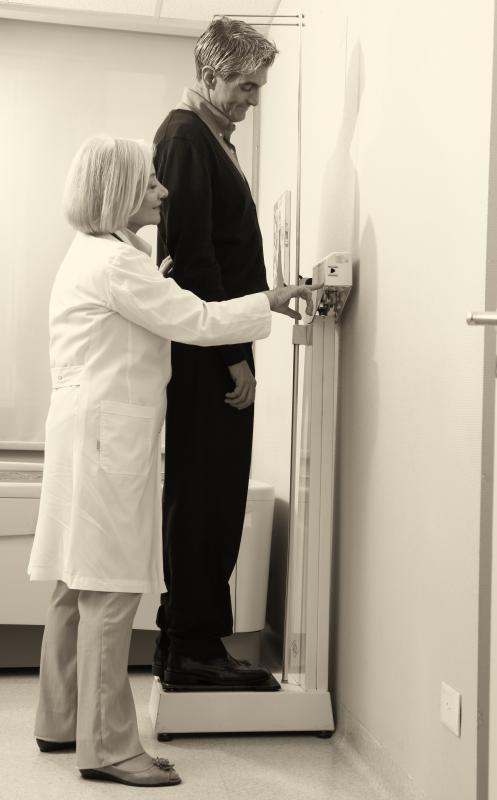At WiseGEEK, we're committed to delivering accurate, trustworthy information. Our expert-authored content is rigorously fact-checked and sourced from credible authorities. Discover how we uphold the highest standards in providing you with reliable knowledge.
What Are the Different Types of Progeria Treatments?
As there is no cure for progeria as of 2011, treatments tend to focus on preventing complications and alleviating symptoms. Common treatments, such as a low-dose aspirin regimen, physical therapy, and feeding tubes, are all designed to ease the symptoms of progeria rather than cure or prevent the condition. Potential drug treatments, including farnesyltransferase inhibitors (FTIs), a bisphosphonate called zoledronic acid, and a statin called pravastatin, are all being studied in clinical trials.
A low-dose aspirin taken daily is a typical treatment for this condition. Low-dose aspirin can prevent heart attacks and stroke, the two most common causes of death for children with this disorder. Aspirin works by reducing the clumping action of platelets in blood and preventing clots from impeding blood flow to the heart and brain.
Physical and occupational therapy are also common progeria treatments. These therapies target joint stiffness and problems with hip movement. The goal is keep the patient as active as possible for as long as possible.

Other progeria treatments focus on maintaining a patient’s weight and nutrition. An infant with the condition may have difficulty feeding and require a feeding tube and syringe. Dietary supplements can also help prevent weight loss and ensure that the child is receiving necessary nutrients every day.
In some children, it may be necessary to extract baby teeth. The permanent teeth can start coming in before the primary ones fall out. This can result in a second row of teeth or overcrowding if an extraction is not performed.

A French-based research team made the development of potential drug therapies for the condition possible when they discovered the gene mutation responsible for the syndrome in 2003. Affected children have a mutation in the gene LMNA that results in the production of abnormal prelamin A or progerin. Clinical trials focus on drugs believed to prevent progerin from damaging cells and causing the genetic instability that triggers progeria symptoms.

FTIs like lonafarnib, pravastatin, and zoledronic acid all work by preventing a molecule called a farnesyl group from attaching to progerin. When this molecule attaches to progerin, normal cell function is inhibited and progeria results. Each of the three drugs affects a different step in the cellular process that creates the farnesyl group.
Lonafarnib was originally developed to treat cancers including brain tumors, and it works by inhibiting an enzyme required to attach the farnesyl group to a protein like progerin. The statin pravastatin is typically given to lower cholesterol, but it also blocks the production of farnesyl. Zoledronic acid is a bisphosphonate that increases bone density and, like pravastatin, prevents farnesyl production.
It is believed that a combination of these drugs may be more effective than administering each individually. These potential progeria treatments have been shown to restore the nuclei of progeria cells to normal in cell cultures. It is not yet known if any of these drugs will cure or prevent the syndrome, but they may allow patients to live longer and healthier lives.
Progeria is an extremely rare progressive genetic disorder that causes rapid aging in children. Only approximately 130 cases have been documented since 1886. A child with the disorder will often appear to be normal at birth, but symptoms like hair loss and skin changes typically manifest within 12 months. Sufferers often die of cardiovascular disease or stroke, and the average life expectancy is 13, although some live more than 20 years.
AS FEATURED ON:
AS FEATURED ON:













Discuss this Article
Post your comments